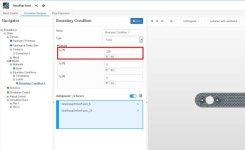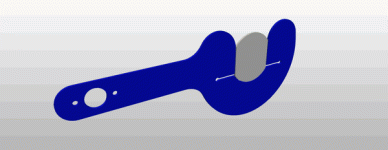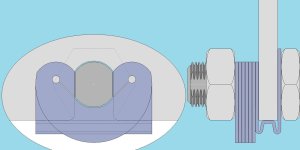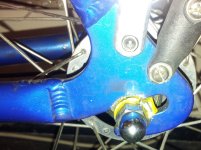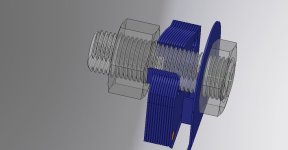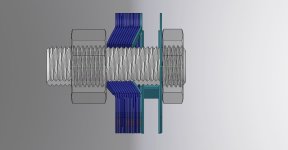fechter said:
Nowhere in this screen shot does it show where the 200N is applied nor does the picture of the part resemble the one being discussed.
It does! Both faces to which the load boundary condition are being applied are clearly named. And that it what I'm up against.
When you have loud-mouthed senior members claiming rocket science engineering skills, but who do not know how a nut and bolt works, what chance is there is my being able to successfully explain that you do not specify "the motor torque" in a component simulation, but rather the forces that act on the component as a result of that torque.
fechter said:
All it shows is 200N. There is not enough information to answer my question.
Could it be that your question makes no sense in the context of the simulation?
The purpose of the simulation is to test whether the selected material and profile provide sufficient material to withstand the forces applied. (They do!)
What forces will be applied to the contacting faces of the TA by a given motor, depend entirely upon the torque that motor generates; the radius at which that torque acts upon the component; the arc (due to tolerances) through which that torque can accelerate before contact is made; the elapsed time (thus the rate) of acceleration; and a bunch of other factors which cannot be easily modeled, and which would vary from installation to installation.
The purpose of the simulation is to determine where, and at what levels the stresses and strains act within the material of the TA; to ensure that they are distributed in a way that keeps them within the materials physical characteristics; and allow the profile to be adjusted to ensure they do.
For now, I'm sick to the back teeth of the bait&switch tag-team put downs I've encountered here. I've never experienced a site quite like this for its claims of superior knowledge and skills, that are so absent from evidence, if you look at anything more than a cursory level; nor the levels of self-serving: let's-gang-up-on-the-newbie mentality.
And the following taunt is exactly what I've come to expect here:
fechter said:
Since you seem to be dodging the question, I can only assume you don't know the answer either.
I'm not dodging the question, just choosing (belatedly) to require some effort on the behalf of those choosing to question the design, in the hope to ensure that they have the requisite knowledge to understand the answer; before I expend time & effort to construct an answer.
Chalo is right in as much as it is possible that I adjusted the range of the graphical representation to disguise the levels of stress and strain being experienced under load. It is possible, but I did not. They are as the software defaults them.
He may be so used to having to tell lies to sustain his facade of technical know-how, but I am not; and it did not cross my mind to even consider such deception.
In any case, it is a precondition of the free account at the site (simscale.com) that all models are publicly available, and anyone here could go there, and run the model for themselves. But I am not encouraging that, because I do not want to have to expend my time spoon-feeding wanna-bes on the technicalities of how to use simulation software. If you have the skills, have at it.


